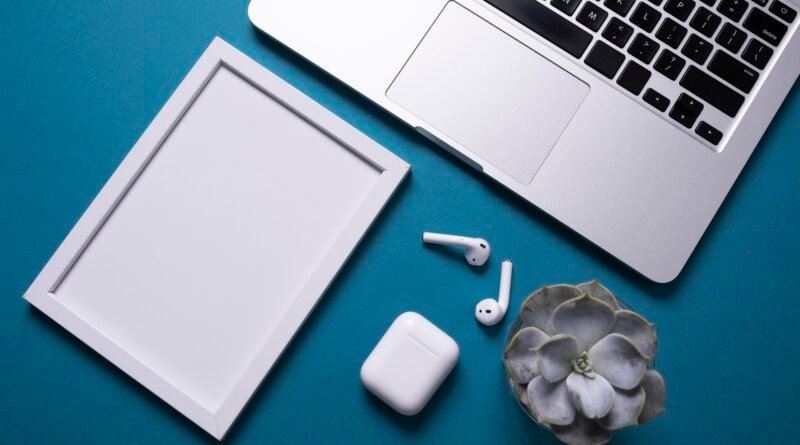A Step-by-Step Guide on Connecting AirPods to Your Computer
Famous for integrating with Apple products in a smooth manner are Apple AirPods. But they can also be used with Windows PCs, so customers can take advantage of high-quality audio on many platforms. This tutorial will help you connect your AirPods to a Windows computer, solve common problems, and get the most out of your AirPods. In order to make the content interesting and educational, let’s get started with the steps, concentrating on burstiness and ambiguity.
Understanding AirPods and Windows Compatibility

The primary target market for Apple AirPods is the Apple ecosystem, despite their sophisticated design and cutting-edge technology. However, they can also be used with other devices—including Windows PCs—as standard Bluetooth headphones. They are a well-liked option for people that work in multi-platform environments because of their adaptability.
Initial Setup: Preparing Your AirPods
Make sure your AirPods are charged before beginning the pairing process. Shut the cover and put them in their charging case. On the rear of the case, there ought to be a tiny circular button visible. Hold down this button until the white LED light within the case begins to blink. This means that your AirPods are prepared to pair with a new device and are in pairing mode.
Pairing AirPods with a Windows PC
-
Access Bluetooth Settings:
- On your Windows PC, click the Start button and go to Settings.
- Select Devices, then click on Bluetooth & other devices.
- Make sure Bluetooth is turned on.
-
Add a New Device:
- Click on Add Bluetooth or other device.
- In the dialog box that appears, select Bluetooth. Your PC will start searching for nearby Bluetooth devices.
-
Select Your AirPods:
- Your AirPods should appear in the list of available devices. They might be listed as “AirPods” or something similar.
- Click on your AirPods’ name to initiate the pairing process. Once connected, a confirmation message will appear.
Troubleshooting Connection Issues
Even with the best technology, issues can arise. Here are some common problems and their solutions:
-
AirPods Not Showing Up:
- Ensure your AirPods are in pairing mode (white light blinking).
- Move your AirPods closer to your PC and away from potential interference.
-
Connection Fails:
- Restart your PC and repeat the pairing process.
- Ensure no other device is currently connected to your AirPods.
-
Audio Issues:
- Check the sound settings on your PC and make sure the AirPods are selected as the output device.
- Update your PC’s Bluetooth drivers.
Reconnecting AirPods to a Windows PC
Reconnecting your AirPods is simple once they are synced. If Bluetooth is enabled, just take them out of the case, and they ought to instantly establish a connection with your computer. If not, take these actions:
-
Manual Reconnection:
- Go to Bluetooth & other devices settings.
- Under the Audio section, find your AirPods and click on them.
- Select Connect.
-
Handling Multiple Devices:
- Your AirPods could not switch to your PC automatically if they are connected to another device. First, unplug them from the other gadget.
Enhancing Your AirPods Experience on Windows
To get the most out of your AirPods on a Windows PC, consider the following tips:
-
Keep Firmware Updated:
- Make that the most recent firmware and applications are installed on your Windows computer and AirPods. Many connectivity and performance problems can be fixed by doing this.
-
Use a Bluetooth Adapter:
- For greater speed and stability, use a Bluetooth 5.0 adapter if your PC is running an older version of Bluetooth.
-
Customize Audio Settings:
- Utilize Windows’ sound equalization and enhancement tools to adjust the audio quality to your tastes.
Advanced Troubleshooting and Tips for Connecting AirPods to a Windows PC
Resolving Persistent Connection Issues
If you’ve tried the first several fixes and are still having problems, you may need to do more complex troubleshooting. Here are a few thorough tactics:
-
Resetting Your AirPods:
- Place the AirPods in their case and close the lid. Wait for about 30 seconds.
- Open the lid, then press and hold the setup button on the back of the case until the status light flashes amber, then white.
- Try the pairing process again.
-
Updating Bluetooth Drivers:
- Open the Device Manager on your PC by searching for it in the Start menu.
- Expand the Bluetooth section.
- Right-click on your Bluetooth adapter and select Update driver. Choose Search automatically for updated driver software.
- After updating, restart your PC and attempt the pairing process again.
-
Bluetooth Troubleshooter:
- Navigate to Settings > Update & Security > Troubleshoot.
- Select Additional troubleshooters.
- Find and run the Bluetooth troubleshooter.
Enhancing Audio Quality on Windows
In order to optimize the sound quality of your AirPods on a Windows computer, you can adjust some configurations and make use of third-party apps:
-
Audio Enhancements:
- Go to Control Panel > Hardware and Sound > Sound.
- Under the Playback tab, select your AirPods and click Properties.
- Go to the Enhancements tab and check Disable all enhancements if it’s checked, or experiment with different settings to improve audio quality.
-
Using Equalizers:
- Third-party equalizer apps like Equalizer APO can provide more control over your audio settings.
- Download and install Equalizer APO.
- Follow the setup instructions and configure it to adjust the sound profile of your AirPods to your liking.
Understanding AirPods Limitations on Windows
While using AirPods with a Windows PC is possible, some features that are exclusive to Apple products might not operate or might work just partially:
-
Automatic Switching:
- Depending on how they are used, AirPods can automatically swap between Apple devices. You will have to choose them by hand in the Bluetooth settings on Windows.
-
Spatial Audio and Head Tracking:
- These functions are exclusive to certain AirPods models and are meant to be used with Apple products. On Windows PCs, they might not be accessible or completely functional.
-
Battery Level Indication:
- You won’t get comprehensive battery status alerts for your AirPods on Windows, in contrast to iOS devices. While some third-party apps may offer this feature, their accuracy and smoothness might not match.
Conclusion
For non-Apple users, connecting Apple AirPods to a Windows PC opens up a world of excellent audio. You can use your AirPods for communication, work, or playback if you know how to pair and troubleshoot them on a Windows platform. By following the instructions in this guide, you may take advantage of the AirPods’ cross-device compatibility.
FAQs
1. Can I use all AirPods features on a Windows PC? While you can use AirPods for audio playback and basic microphone functions, some features like automatic switching and Siri are exclusive to Apple devices.
2. Why won’t my AirPods connect to my PC? Ensure your AirPods are in pairing mode and within range. Restarting your PC and updating Bluetooth drivers can also help.
3. How do I disconnect AirPods from my PC? Go to Bluetooth settings, find your AirPods in the list of connected devices, and click Remove or Disconnect.
4. Can I use AirPods for gaming on a Windows PC? Yes, but be aware that Bluetooth audio can introduce latency, which might not be ideal for competitive gaming.
5. Do AirPods work with Windows 10 and Windows 11? Yes, AirPods are compatible with both Windows 10 and Windows 11 as long as the PC supports Bluetooth connectivity.




